Sharlyn J. Lauby's Blog, page 8
May 20, 2025
Organizations: Labor Law Posters Could be Different for Your Industry and Location

Estimated reading time: 5 minutes
(Editor’s Note: Today’s article is brought to you by our friends at Poster Guard® Compliance Protection Service , a division of HRdirect , and the leading labor law poster service that gets your business up to date with all required federal, state and local labor law postings, and then keeps it that way — for an entire year. Enjoy the article!)
Today’s article is a friendly reminder that when we’re thinking about labor law posters, not every organization is the same. Some organizations have specific labor law posting requirements based on their industry and location.
Currently, there are six federal labor law posters that most organizations are required to post.
Equal Employment Opportunity Commission (EEOC)Employee Polygraph Protection Act (EPPA)Fair Labor Standards Act (FLSA)Family and Medical Leave Act (FMLA) Occupational Safety and Health Act (OSHA)Uniformed Services Employment and Reemployment Rights Act (USERRA)Organizations that have their federal and state postings, but not their industry specific ones, are still at risk. For example, health care organizations might have up to 18 additional notices covering areas such as biohazard materials, radiation areas, and Health Insurance Portability and Accountability Act (HIPAA) Notice of Privacy Practices.
Restaurants might have requirements to post information about alcohol service, CPR and choking assistance information, and notices for tipped employees. In addition, some restaurants are subject to workweek laws. These posting requirements happen mostly on a city level.
Public-sector employee notices include information about electronic monitoring, right-to-know postings, and whistleblower protections. Government agencies also have their own unique versions of the FLSA and OSHA. The takeaway here is that when it comes to federal, state, and local posting requirements, we can’t just assume that all organizations are the same.
It might be tempting to think that the organization doesn’t need to spend a lot of time worrying about labor law poster enforcement because the organization can simply pay the fine and move on. Someone might say, “So, what’s the big deal if the company doesn’t have their industry postings?” Let’s remember that a primary purpose of labor law posters is to inform employees of their legal rights and responsibilities under federal, state, and local law.
Sadly, I’ve actually heard senior executives suggest not displaying posters because they were “ugly”. Thankfully, that particular organization came to their senses and realized they needed to focus on the purpose of the posting and their responsibilities as an employer.
Also, if the organization has government contracts, don’t forget your federal contractor postings. According to the U.S. Treasury department, the United States government spent $6.75 trillion (not a typo) last year. While a big piece of government spending goes towards programs like Medicaid and Social Security, billions of dollars are spent with private sector companies, like defense contractors.
But don’t make the assumption that only big businesses are federal contractors. Last year, $178 billion in federal procurement opportunities was awarded to small businesses. Many different types of organizations have contracts with the government: auto dealers, financial institutions, non-profits, retailers, service establishments, technology companies, etc. If your organization is a federal contractor, there are posting requirements. Here’s a sampling of the nine common federal contractor posters:
Department of Defense (DOD) Hotline Department of Homeland Security (DHS) HotlineE-VerifyMinimum WageNational Labor Relations Act (NLRA)Notice to Workers with DisabilitiesPaid Sick LeaveRight-to-WorkWalsh-Healy Public/Service ContractsOne of the reasons that I mentioned the “ugly poster” comment earlier is because I’m not naive. I realize that organizations might have plenty of money to pay a fine. The question becomes do organizations want to pay two fines? Six fines? Ten fines?
I spoke with Lillian Chavez, Esquire, managing legal research attorney at HRdirect, and she told me that the fines for a federal notice violation could be as much as $43,000+ per location. So, let’s say that you’re an auto dealer with 4 locations that services government vehicles. That puts your risk potential at $172,000. Not to mention increased legal exposure in employment litigation and negative public relations if job candidates and employees found out about the incident.
So, it goes without saying, but I’ll say it anyway, the penalty for non-compliance isn’t just a fine. For some organizations, it could include losing a government contract. I’d like to think that, if your organization has a nice contract with the government, it makes good business sense to maintain compliance and keep it that way.
Organizations need to maintain labor law posting compliance. We can’t forget that labor law posting compliance is complex. Frankly, staying current with labor and employment legislation is complex in general. What’s amazing to me is that organizations don’t look for ways to make the process easier.
The good news is that our friends at Poster Guard have a Labor Law Poster Service that will do it for you. Yep, that’s right. Poster Guard monitors labor law requirements (at the federal, state, and local level) and lets you know when things change. In addition, they have an add-on service that covers industries like healthcare, restaurants, and the public sector.

Poster Guard extends a 100% guarantee that all posters are compliant – or they’ll pay any government fine due to improper posting content. But to me, the best part of the service is that for an entire 12 months, you get new posters every time a mandatory change occurs … automatically and at no additional cost.
I’ve mentioned before that one of the biggest business lessons I’ve learned as a consultant is just because I could do something doesn’t mean I should. Spending huge amounts of time on manual tasks keeps me from other activities like recruiting, engagement, learning, and retention. The same applies to other organizations. Spending lots of time manually tracking labor laws keeps the organization from their customers. That has a direct impact on the bottom-line.
The post Organizations: Labor Law Posters Could be Different for Your Industry and Location appeared first on hr bartender.
May 18, 2025
Dealing With a Toxic Work Environment – Ask #HR Bartender

Estimated reading time: 5 minutes
Today’s reader note is one that some people might identify with – working in a toxic environment. A toxic work environment is a phrase used to describe an organization that’s filled with significant personal conflicts that can impact a person’s wellbeing. The note is kinda long, but worth the time to read. Oh, and a quick FYI – I did a little editing to remove any identifying info.
Hi Sharlyn, I’m hoping you can tell me if there are resources that can guide me through a sticky situation at work.
I work with a manipulative co-worker, who is my primary partner, so it’s impossible not to deal with them. They play favorites, tell different people different things about the same situation, exclude people from meetings / communications, bully, are disingenuous, and will say one thing to your face and then do the exact opposite and they bad-mouth people behind their backs. It is our politics. The behavior is so bad it has driven at least one person off our team and, for the first time at this company ever, I have had to raise ethics concerns due to borderline behavior with our clients. Everyone seems to be aware of the situation and the issues with this person. They have a bad reputation, have had run-ins with multiple other co-workers and I have been warned by people I trust that I ‘should watch my back’.
To make matters worse, their manager seems to be in denial of the situation or just doesn’t care. I raised an issue where an older employee was being told negative things about their age and the manager replied ‘I don’t see the issue, I’ve heard way worse’ – even though this is a clear violation of the company code of conduct. Another co-worker raised an issue of misleading emails – and they had the messages and documentation from others on what the truth was and, again, their manager just said they ‘didn’t see an issue’ and thought it was all interpersonal. My manager, for their part, is conflict avoidant. I have told them and shared my documentation, and they refuse to act without a ‘smoking gun’. Since this is passive aggressive and manipulative behavior, there is no ‘smoking gun’. This person doesn’t swear, or attack openly and it seems they’re only willing to act if something comes up that is so atrocious it can’t be denied. There is a lack of accountability and, even when rules are set down, there is no enforcement when they are broken.
This has been going on for almost a year now and I have never faced an issue that seems as intractable as this. I have started engaging HR, but their processes take months. I have successfully navigated serious disagreements between individuals and even entire teams before in much less time than this is taking. I have started looking for other roles internally and externally as I think this group may just be so systematically dysfunctional that there is little hope for a solution in the short term.
Is there anyone who advises on situations like this? Maybe I just lack the tools to address this? Maybe it’s best to remove myself from a department other people have told me is ‘toxic’? Any advice you can give is greatly appreciated.
Obviously, there are parts of this story that we can’t address because we don’t have the ability to ask questions and investigate. But we have talked about similar situations on HR Bartender so I want to share some resources that could be helpful.
Employee Conflicts and Misunderstandings Still Need an Investigation
I’ve said it before and I’ll say it again – in today’s work environments, we will not be friends with everyone. But that doesn’t mean employees should treat each other with disrespectful or harassing language. When incidents happen, organizations can’t dismiss them. They always need to be investigated fully.
This reader mentioned going to HR. There can be consequences when HR doesn’t listen to employees and / or properly investigate issues.
What You Can Do When HR Doesn’t Listen
One thing is certain, employees need to feel that they can go to HR. They might not like what HR says, but they have to be comfortable speaking with someone in the department.
HR Failed to Investigate an Incident
Employees need to feel they can report concerns to the organization. AND that the organization will properly investigate the situation. Not only is there a liability in ignoring an employee’s complaint, it’s just not the right thing to do.
Sadly, it’s possible that the organization will continue to sidestep the situation. We don’t know. That being said, employees do have options.
Quitting: How much Frustration Can You Deal With
Employees should try to share their concerns with management and trying to figure out a way to make things work before thinking about quitting. As an HR pro, that’s what we hope happens. Employees give us feedback to make the workplace better. But I also know that when employees bring feedback, the organization must be prepared to do something with it. And if they don’t, then employees will make their own decisions.
Employees: When Should You Lawyer Up
Depending on the situation, there could be times in your employment when you might want to seek legal guidance or contact a government agency. Attorney Donna Ballman and legal consultant Robert Teachout, SHRM-SCP share their experience.
Unfortunately, in these types of situations, there’s not a “one size fits all” approach. It’s one of the reasons we’re not able to offer a clear answer on how to handle exactly what’s happening here. But employee conflicts do need to be investigated and ultimately, employees need to decide if they’re willing and able to do their best work given the situation they’re in.
Image captured by Sharlyn Lauby while exploring the Wynwood Art District in Miami, FL
The post Dealing With a Toxic Work Environment – Ask #HR Bartender appeared first on hr bartender.
May 15, 2025
5 Ways to Improve Employee Morale

Estimated reading time: 3 minutes
We’re all reading the same news about layoffs and demands to return to the office. I don’t really want to discuss that today. But I do want to talk about something that might occur when employees aren’t happy – and that’s a decline in morale.
Morale is defined as “the confidence, enthusiasm, and discipline of a person or group”. Organizations could have an individual with low morale. Or a team with high morale. It’s important for organizations to understand morale and put steps in place to keep morale high. Morale can have an impact on employee engagement, which many studies show has a direct correlation to productivity and the bottom line.
If you’re organization is concerned about employee morale, here are a few things to consider:
Do managers know what motivates their employees and teams? Some managers make the mistake of thinking what motivates them is the same as what motivates everyone else. And that’s simply not true. For example, some employees might be motivated by a goal they’ve set. And others might be motivated by learning something new. Motivation is important because what motivates an employee could be the reason they get up and come into work every day and do their best.
Do managers know what type of rewards and recognition the team appreciates? Like motivation, every employee wants to be recognized in a way that they appreciate. Some employees like be recognized in front of the team. Others absolutely hate it. Some employees would love the reward of a day off with pay and others would like to attend a conference. Managers should know how employees want to be recognized for their hard work.
Is there a balance of individual and team activities? Adding to the point above about employee rewards and recognition, managers have the challenge of creating a balance between doing things for the individual employee and the team. Sometimes, the best recognition is a pizza party team celebration and sometimes, it’s recognizing an individual employee for their performance. Managers need to resist the urge to do team recognition because it’s faster and cheaper than recognizing individuals. Employees are smart and they can see right through this.
Does the organization promote self-care and wellbeing? Sometimes employees need a day off, or a fun distraction, or maybe a side quest to help them recharge their morale. When managers can see employees need to recharge, do they support it? When employees tell their manager that they need to recharge, does the manager help them? Our organization’s best employees occasionally need support to recharge and do their best work. Think about how the organization can support self-care and wellbeing.
Are managers being a good role model? What I mean by this is … are managers taking care of themselves? Are they showing the team that “yes, there are hard days” but we’ll get through them together. Sometimes managers can set the example by showing they’re human. By laughing and having fun. We can do serious work and deliver results and have fun at the same time. Managers have the opportunity to show their employees how it’s done.
Employee morale is important. And while I’m always game for a taco party, that’s not how morale gets fixed or maintained. According to Gallup, 70% of engagement is determined by managers. Managers need to know what gets their team excited about work and how to recognize good performance. It will have a positive impact on the organization and the bottom line.
Image captured by Sharlyn Lauby while exploring the streets of Dallas, TX
The post 5 Ways to Improve Employee Morale appeared first on hr bartender.
May 13, 2025
Productivity Series [Part 4]: Get Hard Tasks Done First
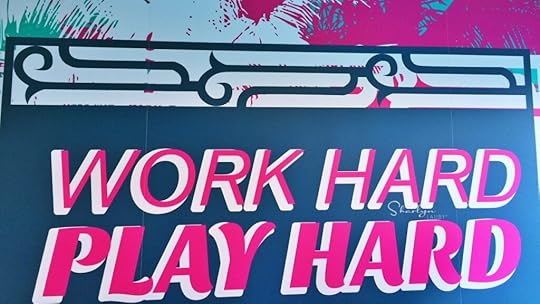
Estimated reading time: 4 minutes
“If it’s your job to eat a frog, it’s best to do it first thing in the morning. And if it’s your job to eat two frogs, it’s best to eat the biggest one first.” – Mark Twain
You might have heard this quote from Mark Twain before. The “frog” in this quote isn’t an amphibian. It represents a hard task. So, if you have a hard task to do, it’s best to work on it first thing in the morning. And if you have two hard tasks, do the biggest one first.
We’ve been talking about productivity lately. So far, we’ve discussed the Pomodoro Technique, the 3/3/3 Method, and the Eisenhower Matrix. Today, I want to talk about ‘eating the frog” based on the quote from Twain.
Twain aside, a lot of people use this strategy. They go into the office and get the hardest work done first. Then, the rest of the day is easy (at least by comparison). Also, if they misjudge the time it takes to get the hardest work done, they have all day to finish instead of starting something later in the day and then realizing they’re not going to be done before the close of business. This strategy can be helpful in managing time.
It can also be helpful when we have a task that we don’t particularly like … but we still have to do it. Honestly, we all have parts of our job that we just don’t get excited about. Happens to everyone. So, getting those tasks out of the way early in the day could be exactly what we need. Then we can finish the day doing the stuff we enjoy more.
There are a couple of downsides to the frog strategy. The first is identifying what do to first. Meaning, what’s the hard task? It could be helpful to ask the same questions that we discussed in the Eisenhower Matrix article: 1) Is it urgent? And 2) Is it important? That might help to identify what to do first. Then you could spend the rest of the day working on maintenance tasks (like we discussed during the 3/3/3 article). It always feels good to cross a bunch of items off the to-do list.
But for me, the biggest challenge with the frog strategy is how the operation works. True story. Years ago, I worked at a hotel where my boss came in really early in the morning to walk around and see what’s going on. If I was in my office, he would stop by and offer to buy me a coffee. Of course, I would go. It was uninterrupted time with him. We could chat about ideas, etc. That time with him was very helpful in getting buy-in for projects. But it also meant that it cut into my “do the biggest task first thing in the morning” time.
So, as you’re thinking about using the “eat the frog” approach to getting work done, I think it’s important to keep it in context. We can’t just ignore the operation. Maybe this approach is best for times when we have a pressing deadline and we announce to the team, “Hey, I need to get this done first thing tomorrow so I’m not going to be available except for emergencies.” Or something like that. You get my point.
As we’re going through this productivity series, one of my takeaways is that productivity can be achieved many different ways. It’s possible one productivity method would be good for getting routine tasks accomplished (like the 3/3/3 Method) and another one for those big projects with a deadline (like eat the frog). That means being familiar with multiple ways to get stuff done. And when we’re faced with a task, ask ourselves, “What’s the best way to get this done?”.
Image captured by Sharlyn Lauby somewhere off the coast of Miami, FL
The post Productivity Series [Part 4]: Get Hard Tasks Done First appeared first on hr bartender.
May 11, 2025
Bookmark This! The HR Strategy Edition
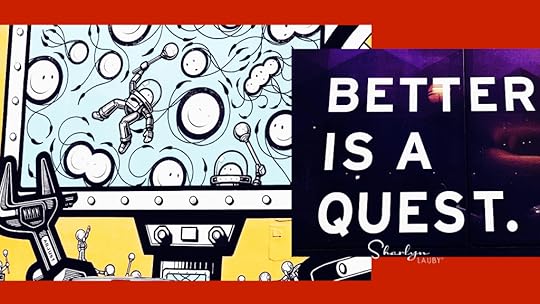
Estimated reading time: 3 minutes
Now more than ever, HR professionals need to know how to develop, implement, and maintain strategy. As a reminder, a strategy is defined as a plan of action designed to achieve success. Frankly, strategy work is hard right now because the business world is changing frequently, and the organization is reacting in response. So, I can understand how it might feel like HR strategies are in a constant state of flux.
But the key to success is for HR strategies to align with the organization. It could be helpful to remember that – in addition to strategy alignment – HR pros need to be strategic. Being strategic is defined as “relating to overall long-term interests”.
I wrote an article years ago titled “Creating Strategy and Being Strategic Aren’t the Same Thing”. I hope you’ll check it out when you have a moment. Remembering where developing strategy and being strategic intersect is valuable during times of uncertainty. It helps us understand that we need to shift our focus from a “been there, done that, so I already know the answer” to a “been there, know what happened, now let’s apply the learnings to our current situation.” This means relying less on instinct and more on analytics.
The conversation about HR, strategy, and analytics has been around for a while. Today’s article is a reminder that we need to continue our focus in these areas. Here are a couple of articles that might help:
HR Professionals Can Learn How to Be More Strategic
I remember reading an article years ago about what CEOs were looking for in future chief human resources officers (CHROs) and they talked about the need for HR to be more strategic. Then two paragraphs later, those same CEOs were asked what they were doing to make the human resources team more strategic … and they said nothing. (Not joking.) This is an opportunity to gain new skills or refresh existing ones. The need to be strategic isn’t going away. Especially in today’s business climate.
Using the Scientific Method to Create Organizational Change
It’s easy to see the value in strategic thinking. Being able to effectively apply our theoretical knowledge and in-the-trenches experience will serve us well. As businesspeople, there will always be some sort of challenge we need to work on. Some problems are big, and others are small. Finding a proven method to research and work on problems is necessary. What can be very beneficial for the organization is to adopt a method – like the scientific method – properly train everyone in the organization and use it regularly to make the organization better.
I wish I could say that the frequent change we’re experiencing is going to just go away, but I’m not sure that’s the case. As business professionals, we need to get comfortable with change. And as HR professionals, we need to help the organization get comfortable with it. The good news is we have tools and processes that can help us make good decisions and create challenging but achievable strategies.
Stay strategic and use those skills to manage change.
Image captured by Sharlyn Lauby while exploring the streets of Fort Lauderdale, FL
The post Bookmark This! The HR Strategy Edition appeared first on hr bartender.
May 8, 2025
Use Listening Styles to Become a Better Listener

Estimated reading time: 4 minutes
I’d like to think we can all agree that listening is an important communication skill. And we’ve talked in the past about active listening and empathic listening.
I was doing some office spring cleaning recently and ran across an old ATD InfoLine on listening. This one had a different view on listening that I wanted to share. It talked about understanding your own listening style. The idea being that if you understand how you like to listen, that could be helpful in understanding others and the way they like to listen. Of course, all of this leads to better communication. The four listening styles mentioned in the InfoLine are:
Analytical is focused on logic and details. Analytical listeners strive for accuracy and look for tangible evidence to support the points being discussed. If you’re talking with a person with an analytical listening style, they will want to see that you’re prepared and have data and backup for whatever you’re discussing.
Amiable is focused on building and maintaining positive relationships. When chatting with a person with an amiable listening style, you might find that they keep their own opinions to themselves and ask a lot of questions before sharing their own thoughts.
Driver is focused on results. Drivers aren’t afraid to speak out and share their thoughts, even if they haven’t been asked for them. An individual with a driver listening style could be perceived as pushy or direct. When communicating with them, it’s best to be direct and get to the point quickly.
Expressive is focused on having fun. They are enthusiastic and creative. Individuals with an expressive listening style can also get bored easily. When communicating with them, it’s important to stay focused so the conversation doesn’t go off on a tangent.
The first thing that came to mind as I was reading these different listening styles was that we might have a different listening style based on who we are communicating with and the topic we’re discussing. That’s what makes listening challenging. Being able to recognize someone’s listening style and respond accordingly.
I could see it being helpful to understand the preferred listening style of your manager or colleagues. It could be valuable when talking with them during department meetings or one-on-ones. Understanding listening styles can also be great when making requests or presenting a business case.
This conversation about listening styles reminded me of an important aspect of communication that we don’t spend enough time talking about – that’s know your audience. Not just listening styles but also what’s the best medium to chat with them and what’s the best time of day. In the business world, we spend a lot of time trying to sell our ideas to other people. The best way to do that is by communicating with them in a way that they prefer. They’ll be more receptive to what we’re proposing. Granted, it doesn’t always mean we’ll get what we’re asking for … but the conversation will be better.
It’s also a good reminder that we should let others know the best way to communicate with us. Are there some ways we can clue others into what we expect? And this would help them learn our listening style. I could see phrases like “let me take some notes while we’re chatting” or “how do you feel about this situation” or “I have a limited amount of time right now” or “what’s the impact of this on the future” providing some advance signals about how to proceed.
Listening is an important communication skill. Not only do we need to be good listeners, but we need to understand how others like to listen. It will help shape communications and yield better conversations.
Image captured by Sharlyn Lauby while exploring the streets of London, England
The post Use Listening Styles to Become a Better Listener appeared first on hr bartender.
May 6, 2025
Managers: It Pays to Learn How to Delegate
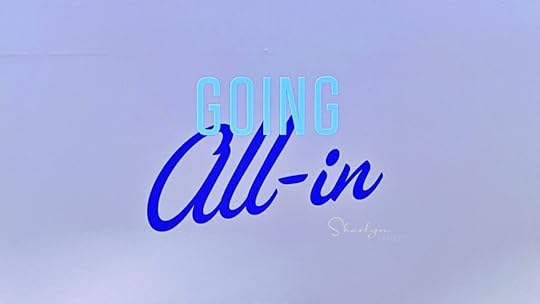
Estimated reading time: 4 minutes
The goal of being a manager is to hire and train your replacement. Managers will not be able to get promoted without someone to take their place. Oh sure, you can get the promotion. But then you will have to do two jobs (while getting paid for one). Managers will be pulled in multiple directions until someone is hired. So, the best thing to do is develop your replacement.
Developing employees doesn’t make a manager dispensable. In fact, having a reputation for developing talent will make a manager indispensable. And if the manager doesn’t want to get promoted or move to another position, then the employee(s) they’ve been developing can take the job.
I’ve seen a lot – and I’m sure you have too – of seminars and articles that talk about being such a great manager that no employee wants to leave. Again, I’m not sure that’s the goal. Granted, we don’t want employees leaving because their manager is a failure. The goal is to encourage employee development and when employees are ready, the manager should support them moving into better roles.
But this means that managers need to learn how to delegate well. I like to think of delegation as understanding what things employees can:
Just do it and never tell anyone aboutDo it and tell the manager laterImmediately go to the manager for guidance.Ideally, managers want to delegate to employees. This allows employees to learn. It also frees up the manager to work on more employee development.
For managers to delegate well, they need to have two things:
A good working relationship with the employee and An accurate understanding of the employee’s performance and capabilities.Managers want to delegate when they know that the employee is capable of doing the work. Plus, the employee is comfortable making decisions about the work or asking for guidance when necessary.
If an employee doesn’t know how to do the work, then delegating to them might make an employee feel like they’re being set up to fail. If an employee knows how to do the work but wouldn’t go to their manager for assistance if they needed it, then it’s possible that mistakes might happen (versus proactively addressing the matter).
The other thing to keep in mind is that delegating is not an all or nothing activity. A manager might delegate one task to an employee but not another. Maybe because the employee is still learning something. This is perfectly normal. The same is true for employees. A manager might delegate a task to one employee and not another. This could be because one employee has been with the company longer and has more historical knowledge to make decisions.
While my explanation of delegation might sound very easy, the truth is … delegation is hard. Both in terms of evaluating when / who / what to delegate and whether the manager is comfortable giving up control. There are managers who feel that if they control everything, then there won’t be any mistakes. Those managers are sometimes called micromanagers.
And getting back to the introduction of this article, micromanagers often don’t get promoted or asked to be on the CEO’s super-secret task force because they don’t have anyone who can manage the day-to-day of their department. Sometimes micromanagers get calls after hours, on weekends, and during their vacation because no one can do anything without checking-in first. You see where I’m going with this.
One of the reasons I wanted to talk about delegation is because of all the conversation these days about return to the office mandates. It’s important to remember that even with employees returning to the office, it’s still good for managers to learn how to delegate. Delegating well helps the manager achieve their own career goals. It also helps them develop their employees – which helps the individual employee and ultimately the organization.
Image captured by Sharlyn Lauby while exploring the streets of Las Vegas, NV
The post Managers: It Pays to Learn How to Delegate appeared first on hr bartender.
May 4, 2025
Using Bloom’s Taxonomy for Artificial Intelligence Learning

Estimated reading time: 4 minutes
Bloom’s Taxonomy is a framework used by trainers and educators to establish learning goals. It was developed by a group of educators chaired by Benjamin Bloom in 1956. It remains a valuable and widely used tool that is adaptable to changing environments. And it has strong application for learning artificial intelligence. The framework has six levels.
Knowledge is being able to remember information. An example would be that a new marketing employee is able to remember how to login to the company’s social media accounts.Comprehension is being able to understand the meaning of information. Our new marketing employees can understand the company’s social media metrics like connections, engagement, etc. Application is being able to use the information to solve problems. The marketing employee can set up automation tools that will disseminate social media posts at the optimum time for engagement.Analysis is being able to break down individual components so they can be understood. The marketing employee can conduct an analysis of marketing spend to show where the company is getting the best return on their investment. Synthesis is using knowledge for new purposes. The marketing employee can recommend new advertising channels based on the information they’ve received.Evaluation is judging the value of information. The marketing employee is actively involved in developing new marketing campaign messages.The reason Bloom’s Taxonomy is important is because when we think about learning, we need to decide what level of training an employee should receive. For example, during orientation, our goal might be to simply provide knowledge. Then later during onboarding, the goal could be to provide comprehension. The learning goal drives the content development. There’s no reason to provide a learning experience at the analysis level if the goal is application.
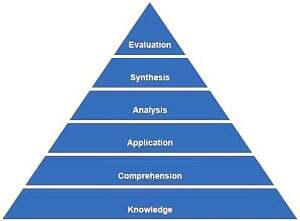
Let me add … this isn’t to insult anyone. We’re not saying that people aren’t capable of learning at the different levels. We’re saying that learning sessions should be aligned with the learning goal. Because the type of learning, the length of learning, and the exercises included in the learning should be appropriate for the desired outcome. There’s no reason to have a one-day session if a one-hour session will accomplish the goal.
I wanted to talk about Bloom’s Taxonomy today because this framework can be very helpful in designing employee learning for artificial intelligence (AI). If organizations are going to use AI, then they need to know what level of Bloom’s Taxonomy the AI technology can provide. Is it simply knowledge? Or is it application?
And once organizations know what their AI technology can provide, then they need to design learning experiences so employees can effectively work with AI. Using our marketing employee example above, let’s say the company’s AI will be able to do knowledge, comprehension, and application. Well, then employees will need to do the analysis, synthesis, and evaluation part. And if they don’t currently have that level of skill, they will need to receive training and development. In addition, employees should receive training so they can effectively work with AI technology on the knowledge, comprehension, and application tasks.
Frameworks like Bloom’s Taxonomy can be helpful in designing learning roadmaps for employees to not only learn their jobs but how to work with emerging technologies like artificial intelligence. It will take some research and planning to design the correct learning goals.
Image of blooms captured by Sharlyn Lauby while exploring EPCOT Center in Lake Buena Vista, FL
The post Using Bloom’s Taxonomy for Artificial Intelligence Learning appeared first on hr bartender.
May 1, 2025
How to Make Time for Yourself

Estimated reading time: 4 minutes
We often say that we need to take time for ourselves. Totally makes sense. If we don’t take care of ourselves, we could negatively impact our wellness and wellbeing. If we don’t take care of ourselves, how will we be able to take care of others that might rely on us. But saying we need to take care of ourselves and actually doing it are two different things. Today, I want to talk about a few of the ways that you can make time for yourself.
Use your self-talk in a positive way. This is very easy to say and difficult to do. You deserve dedicated time for yourself. Don’t let guilt keep you from taking care of yourself. When you take care of you … it has a positive impact on your personal and professional life. So taking time for yourself isn’t a luxury. It’s a necessity.
Identify what you want time for. It could be helpful to identify the types of things you’d like to do with your “me” time. Maybe it’s a hobby like art, reading, or playing a game. Or some form of exercise. Possibly a class you’ve been wanting to take. If you figure out something you want to do, the next step becomes easier … which is identifying how much time it will take.
Figure out the right amount of “me” time. Let’s say that one of the activities you’d like to do is take a class. There’s a MOOC (massive open online course) on edX about “The Science of Happiness” that looks intriguing. It’s self-paced but the course is 8-weeks with an estimated time commitment of 4-5 hours each week. Now you know how much time you’re trying to find to comfortably take this course.
Look at your calendar. Before just giving up and saying that you don’t have time to add anything to your schedule, take a look at your current time commitments. Are there things on your calendar that you can comfortably get rid of? Or if you can’t completely eliminate them, can you shift them for a while to do something else? We recently discussed in our productivity series the Eisenhower Matrix. Maybe use it to look at some activities and determine if they’re urgent and/or important so you can make time for yourself.
Schedule it. If you want to make time for yourself, schedule it. Don’t apologize for it. That being said, we do have to be realistic about when we schedule things and not overwhelming our calendar. That can impact our wellness and wellbeing. But there is absolutely nothing wrong with blocking off time to do something just for you. If you don’t want people to know that you’re blocking off time for yourself, find some phrase you can use that only you will know.
Set boundaries. Personally, I think we all need to set boundaries. That doesn’t mean we need to have a lot of boundaries or that we can’t occasionally move them. But do have some. If we use the example above and you’re taking a class, maybe something comes up and you’re unable to attend the session live and have to listen to it afterward. Or if you’re taking a class and something else comes up, maybe you say “no”, which leads us to our last point.
Find your own way of saying “no”. Some people are really good at saying no, others not so much. You have to figure out what category you fall into and manage it. Honestly, sometimes it makes sense to adjust your schedule. Other times, it’s best to decline. Maybe go back to that Eisenhower Matrix – is it urgent and / or important? The answer could help you decide the best reply.
Managing our time well is one of the best things we can do for ourselves. Yes, there will be days when we’re stacked with meetings and a very long to-do list. But realistically, that shouldn’t be every day. For our wellness and wellbeing, we need to find time to do things that will allow us to rest and also energize. That will prepare us to be our best for the long days ahead.
Image captured by Sharlyn Lauby while exploring the streets of Anaheim, CA
The post How to Make Time for Yourself appeared first on hr bartender.
April 29, 2025
Productivity Series [Part 3]: The Eisenhower Matrix Can Help Prioritize Tasks
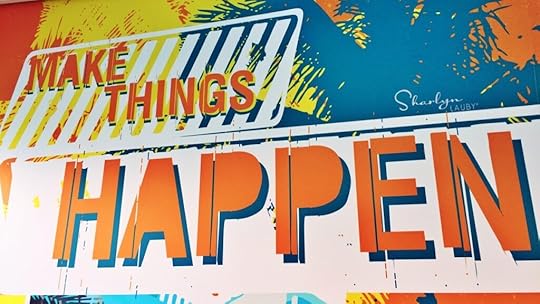
Estimated reading time: 4 minutes
In case you’ve missed it, we’re doing a series on productivity methods. Our last article was focused on the 3/3/3 Method. I hope you’ll check it out. The idea behind the 3/3/3 Method is to spend 3 hours on your most important task, complete 3 shorter tasks that are also important, and the end with 3 maintenance tasks.
The key to understanding the 3/3/3 Method is knowing what’s important. And that can be a challenge if you don’t know how and what to prioritize. So today, I want to talk about priorities.
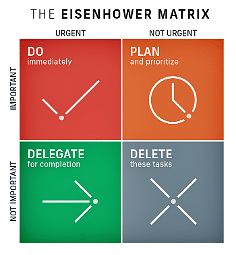
The Eisenhower Matrix is named after Dwight D. Eisenhower, the 34th President of the United States. The matrix has two axes: urgent/important and four quadrants: do, plan, delegate, and delete. This is where it becomes helpful to remember what urgent and important mean.
Urgent means requiring immediate action or attention.
Important means of great significance or value.
The Eisenhower Matrix assigns an action based on whether a task is urgent and/or important. For instance:
DELETE – Tasks that are both unimportant and not urgent should be deleted. This is going to vary depending on your position, but an example of a time-wasting activity might be reading some categories of email.
DELEGATE – Tasks that are urgent but not necessarily important could be delegated or assigned to someone else. Maybe you don’t have someone you can “delegate” to per se but it’s possible that tasks could be reassigned because it is urgent.
PLAN – We can have things that are important to us but not necessarily urgent. For example, strategic planning is important but not necessarily urgent (because we have it on the calendar to do once a year).
DO – This is for tasks that are both important and urgent. Common examples could be an internal crisis or a project with an upcoming deadline.
I see the Eisenhower Matrix being helpful in asking the questions “Is it important?” and “is it urgent?” When we have multiple things on our to-do list, this can help us prioritize and get things done. Teams could use the matrix to make sure that everyone is aware of priorities. I’ve worked on teams before where some people didn’t realize that something was urgent and as soon as they did, they were able to support the team at a higher level.
The downside of the Eisenhower Matrix can be that some less urgent and less important tasks get pushed down on the to-do list (and possibly forgotten). Depending on the task, this could create an emergency later. One of the examples that comes to mind is computer software updates. If we push them off, that might be fine for a few days or maybe even a week. But if we keep pushing them off, there’s a chance that we’ll end up with a computer problem which could cost money and create delays.
The Eisenhower Matrix is a good way to keep track of what’s important and urgent to get done. Even if you only use it to establish priorities and then shift to a different model like the 3/3/3 or Pomodoro Technique to work on the actual task. There’s no rule that says you have to use one productivity tool and only one. That’s the whole purpose of this series, find what works best for you and your situation.
Image captured by Sharlyn Lauby somewhere off the coast of Miami, FL
The post Productivity Series [Part 3]: The Eisenhower Matrix Can Help Prioritize Tasks appeared first on hr bartender.
Sharlyn J. Lauby's Blog
- Sharlyn J. Lauby's profile
- 10 followers



